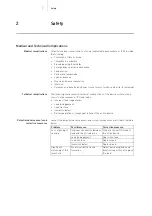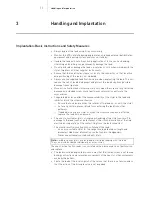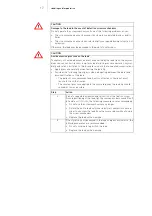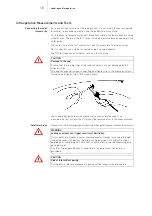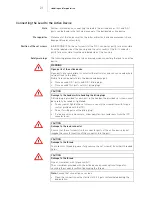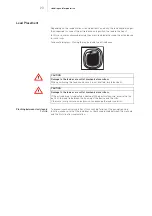
10
Safety
Electrical and Electromagnetic Safety
!
!
WARNING
Risk of death due to induction of ventricular fibrillation
Ensure that the contact surfaces of the lead connectors of implanted leads never
touch any electrically conducting or wet surfaces, including human hands or skin.
Note:
For information about therapy or diagnostic procedures that pose a potential
risk, refer to the appropriate section of this manual (see Risky Therapeutic and
Diagnostic Procedures and Environmental Influences, p. 8).
Electrical safety
Implanted leads are a direct electrical connection to the myocardium.
Therefore, it is important for the safety of the patient that no electrical energy -
other than the pulses from the active device - is conducted to the lead, neither by
direct contact nor indirectly due to electromagnetic conduction.
Electromagnetic induction
A lead can receive electromagnetic energy as an antenna would and cause
electrical voltages at the lead tip and connector.
This can induce ventricular fibrillation in some cases, as well as damage or
otherwise affect the active device and, if the energy dose is high enough, even
damage the myocardium.
Additional information
For further information about this topic and possibilities of risk mitigation, refer to
the manuals for BIOTRONIK active devices.
Preventing leakage currents
Leakage currents to the active device, the lead or directly to the myocardium must
be prevented, as they can trigger lethal arrhythmias.
Line-powered devices operated in the patient's vicinity must always be grounded
according to regulations. Otherwise, there is a danger of leakage currents caused
by such devices being conducted to the myocardium via the lead.
Only connect the lead to battery-powered measurement and pacing devices or to
devices that are classified as type CF (Cardiac Floating) applied parts complying
with EN 60601, and follow the instructions in the respective technical manuals.







